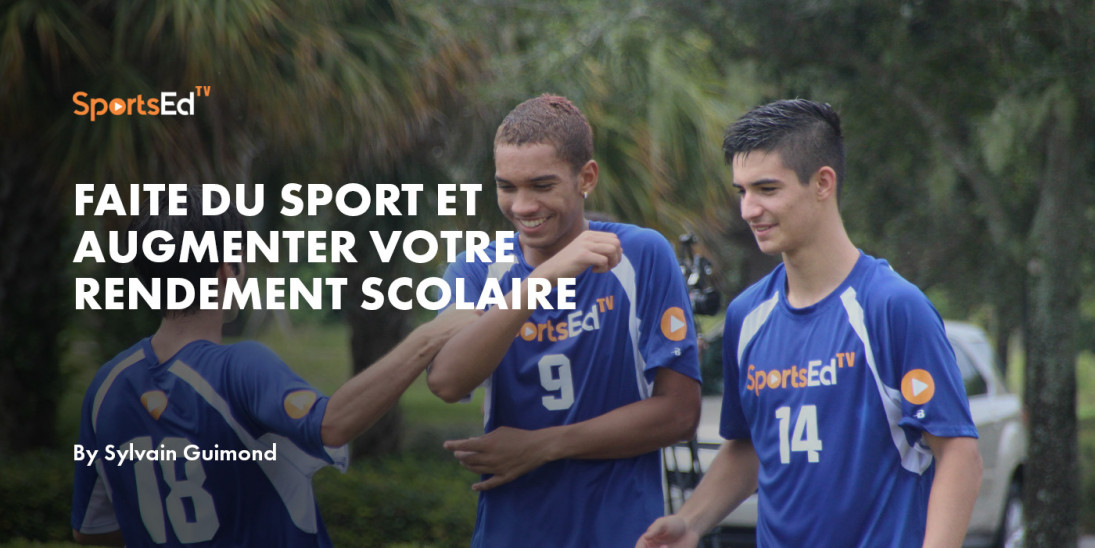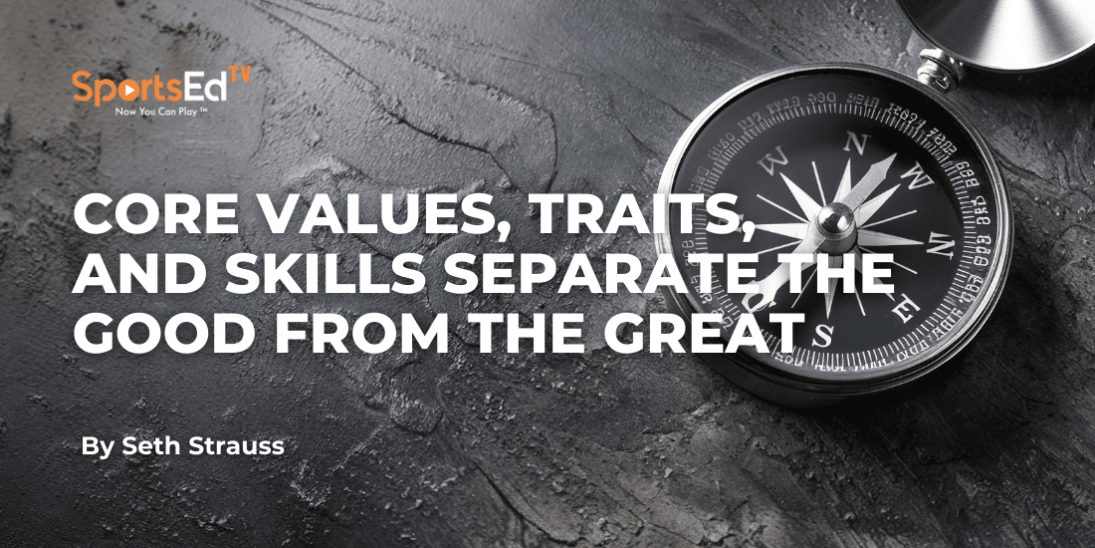Tennis, Mental Health
Welcome and thanks for visiting...

Master Your Mindset to Win More Tennis Matches: A Conversation With Emma Doyle - Part II
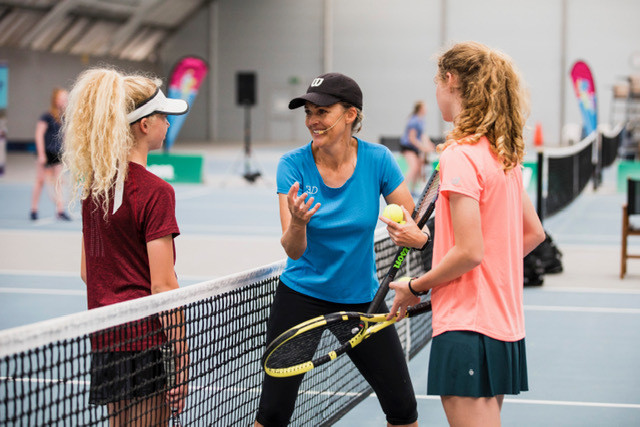
Emma is a Neuro-Linguistic Programming (NLP) and Emotional Intelligence Practitioner with a strong background as a coach on the professional tennis tour. She is a Tennis Australia High-Performance Coach who is passionate about effective communication and coaching strategies that help people discover their inner coach.
SportsEdTV: When you play a breakpoint, we’re all nervous, it's just about being comfortable in that situation and comfortable being nervous. Even when you played 100 matches, you will still be nervous, but you’re just going to be comfortable being nervous. Other coaches say that when you are on breakpoints, you always want to have a fixed play. The way you start the point if you're serving, if you think the served down the tee is your best serve, that's where you want to go. You want to visualize the first two plays, the first two shots in your mind. There's so many different takes on how to win a big point. Players like Nadal do it exceptionally well, I think countless times you've seen him in three-setters, five-setters, and you never know who's going to win. But when it comes to that big point, he always wins. Then, you hear people talking about routines. They talk about the purposeful Sharapova routine and Djokovic with his ball bouncing routine.
What is your take on all of these?
Emma: Yeah, it's a fantastic question. The first thing I would say, again, as an NLPer is that we really take into account the individual. How you should play that point is going to be based on your game style, your tactical objective, the score, the opponent, plus all the other factors. I mean, obviously, Nadal is one of the most mentally tough players we know. Great example. But what I do want to pick up on, is going into what you were talking about with regards to having a routine. I believe in helping people get in a resourceful state (which ultimately helps you to trust your instincts and play in the moment). Again, it is important to individualize that routine for each player. One such technique to help create this ‘state’ happens right before the ritual process. The ritual process refers to bouncing the ball before you serve or having a set return of serve ready position and it happens no matter what. What I'm talking about is the time right before the ritual when I encourage players to fire off an anchor. An anchor is a physical trigger, for example, pressing the right thumb on the dampener. This physical trigger helps players get in ‘state’ because it reminds the player to associate this with an affirmation. Affirmations that encourage and remind us to be in the present moment, for example:
- “I belong here”
- “I am ready”
- “I can do it”
- “I'm in the moment”
- “I'm here and now”
You want to avoid statements like, “I am awesome” or “I win every point” because in tennis you do not 100% control over the outcome. So we call that anchoring and then we associate information to help people play that breakpoint. Many of my clients from this technique far more useful than other distracting thoughts that you could potentially have on big points. You have already thought tactically about how you're going to play the point and so by the time you fire off your anchor and affirmation you have nothing left to think about except trusting your process and letting go of the outcome and perform your ritual. Interestingly, the more you can trust the process, the outcome ends up taking care of itself (and hopefully in your favor)! Does that make sense?
SportsEdTV: Yes. We watch a tennis match on TV now, how do you look for these things? Tennis players all around the world, they look at forehand, you look at technique, they look at movements. How can you look at what different tennis players are doing? Is there any way you can understand what their anchors are? What their affirmations are?
Emma: When watching a tennis match, most people pay attention to the point play and then between the points they are chatting, checking their phone, and not paying attention to observing the players’ body language. It is fascinating to watch what is going on between points and if you can get close enough to the court, what are they saying to themselves. I worked with one particular player last year on the WTA tour, who really benefited from watching replay footage of her between point routine only. We edited out the actual points and she was able to see how her routine either positively or negatively affected her focus and consequently, the point outcome. In summary, watch what happens between the points. Watch what happens on the practice courts. Watch what happens right before big points. I mean, I love watching the Grand Slams, but some of favorite matches to watch are the last round of the qualifications (normally you can see these matches for free. I mean, that's where you learn about the mental conditioning. And you have plenty of opportunities to observe pressure moments. Have a look at what they do. You might not be able to pick up on their exact anchor but the most solid players under pressure will have a consistent routine individually tailored. There’s so much that happens between points. And I highly recommend that you do focus on that, whether it be doubles as well. I mean, I've got something called the hot spot where the players meet in the center of the court. So we're always a team. We're showing that unison. It's not always one player walking up to the other player. So there's lots of subtle between point strategies and observing how people spend this time fascinates me.
SportsEdTV: I saw Leandre Pei's playing doubles match, I know he loves playing for the crowd. He looks out in front of a big crowd and there was a great point that they won and when he won that point, he got the crowd to make noise, he used the crowd and then the next few points, that team won those points. It seemed like he knew that he could use the crowd to benefit him and he probably knew, that it would negatively impact the other team because maybe they're not so experienced playing in front of a big crowd. I thought that was quite fascinating. I'm not sure if that's exactly what happened, but it seems that way.
Emma: My comment to that is it's not just at the professional level. I've seen a local C grade team in pressure moments and all of a sudden there's ten people watching and maybe a partner who's never seen live tennis before (and therefore, unfamiliar with cheering etiquette) or whatever it might be, and it can totally change the dynamics. The first thing I would say is that a lot of players don't like playing in front of crowds or want to play in front of a crowd. So, one's self-awareness is always where we start. However, it is really important that you build little tools, techniques and coping strategies under pressure and embrace potential crowds, because what if all of a sudden people do come to watch you? How are you going to cope with that? Everything we do is about having practical strategies that help players deal with these moments.
It starts with your own personality. What do you need? I have a great little clip on YouTube. Does your personality match your game style? This is a great place to start in taking a deeper dive into knowing what tools you are going to need to embrace the crowd.
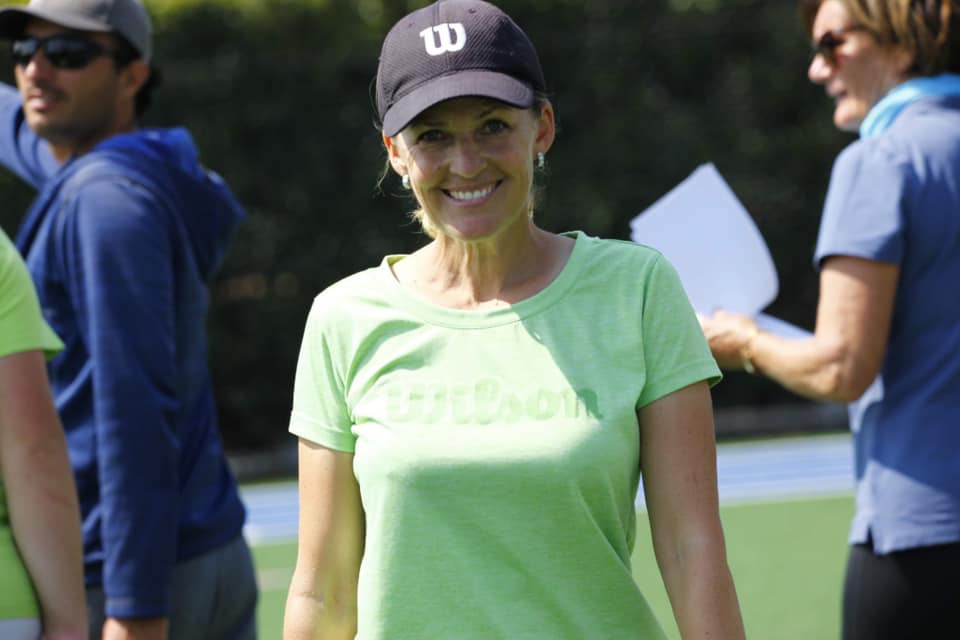
SportsEdTV: I'm sure everyone's been in this situation nothing seems to be working out. How do they reset when someone gets into a really negative way? Specifically, in tennis where you only have 20 seconds between points.
Emma: The answer to this question lies within knowing your personality and which strategies resonate with you. For example, I have had success with one particular client (who often gets easily agitated) by pressing the butt cup of the racquet into the hand to release negative energy and tension. You are allowed to be mad at yourself, for a very short period of time, ‘I can’t believe I missed that shot' or whatever it might be while pressing on racquet into the palm of your hand. This creates a stop like a symbol from the pressure into the hand. Then release the racquet (after 3 to 5 seconds) and say the word “STOP”! Say it out loud, (shout it if you need) and even stomp your foot if that helps, and then you return to your regular routine. This acts like a clearing of the mind process. Another release technique is to go to the towel, which helps you to slow down and starting at the top of your forehand, use the towel to clear your thoughts and move down your face. It's like you're wiping away those thoughts because it's okay to feel the energy of tension. But how quickly you can let it go is the sign of great champions. A couple of negative statements, like "I can't believe I missed that shot" and "I can't believe that happened" this is the time to catch your thoughts, implement a practical strategy and see how fast can you focus all of your energy on that next shot? I read once that Tiger Woods has a similar process where he only allows himself to be angry for three steps before turning his energy to the next shot. Giving yourself three seconds or three steps in tennis is a really cool way to re-set your energy and maintain a healthy and positive "state". Another player that I worked with, used a hair tie on her wrist as her release strategy. When she lifted up the hair tie on her wrist, she allowed herself to be angry/upset. Then when she flicks her skin with the hair tie, it's a reminder for her to snap out of her current mindset. She follows this up with the following two words, “next time”, which helps her go into future based thinking. So essentially, she is connecting with what she wants to make happen rather than making a whole list of everything that's going wrong. This can often lead to self-destruction, and before you know it you have gone down the rabbit hole (negative momentum of energy). That cycle is really hard to break, but tools, practical strategies, such as the released technique helps you to re-set and re-focus, ultimately helping you to regain a more resourceful state.
SportsEdTV: On behalf of the people who like to play devil's advocate, what about people like McEnroe or Safin. There’s countless players that constantly break racquets, yell, but they somehow managed to pull off winning key points, it seems very polar opposites. How they could seem so negative, but when the point starts, it's like this automatic switch. What do you have to say about that?
Emma: Well, I think it taps into everything that we've been talking about, which is that we are all unique experiments of one (different personalities). I'm never going to take John McEnroe and tell him not to release negative energy. I mean, he has to let it out. Obviously, if he could do that in a more resourceful way, great, but that is also what makes tennis is exciting to watch. Even Novak Djokovic has his moments. Sometimes it looks like he is down and out but then all of a sudden he turns it around. Equally, in this year’s US Open we saw a great example for young players of what can happen when an act of hitting the ball behind you can result in a default. A moment that even Novak admitted he wished he could have turned back the clock and make a different decision in the heat of that moment.
Something that the Listening to Darren Cahill, who's a great Australian coach, he talks about what five traits to all champions have in common when talking about men's and women's tennis, like the best of the best, its:
- Work ethic
- Purpose
- Belief
- Resilience
- Team
There's nothing in there about technique or tactics, and I want to pick up on resilience. So whether we're talking about these hot-headed players or the players who on the outside look cool, calm and collected one of the secrets to enjoying your tennis and being successful is in their ability to get over themselves quickly. This is critical. That's what resilience is. How fast can you bounce back from adversity? Tennis is a game of micro-moments of adversity because it is almost impossible to win every single point in a match. Therefore, a reflection question for all of us is, "How quickly can you get over yourself?"
SportsEdTV: That's great answer. When coaches coach kids, they always say, look at Federer, look at this player, look at that player and you often see kids trying to copy game styles, trying to copy personalities. What's the right way to coach someone? How should a kid discover his own personality and build upon that and know how to use it as opposed to copying someone that does it exceptionally well is not a bad idea?
Emma: Well, let's not forget, that's one of the foundation reasons why NLP was first discovered, that is, through copying otherwise known as behavioral modeling. By copying and behavioral modeling, you can add new tools into your playing and coaching toolkit. If I've got a young junior player whose little personality is developing, like, let's take an eight-year-old at the orange ball stage, it is important to help them fall in love with the shape of the court. In turn, this will help children discovered all the necessary skills needed as an all-court player. The orange ball is one of the misunderstood stages yet it really is an opportunity to encourage children to come to the net, which I believe will continue to play a role in the future of game, not to mention recreational doubles is not going anyway for a long time to come. Ultimately, when the players transition into green ball tennis they can choose a game style that best fits their personality and hopefully, via a great environment, they have been exposed to all the different ways of playing tennis. The take-home message is to teach players to fall in love with the shape of the court so that they learn how to come forward, learn how to stay back, learn how to do all the shots, and enjoy all aspects of the game. Remember that once they reach green ball, they have the cognitive capacity to understand who they are as a player and what game style the opponent has. Once they pop out of green ball into yellow ball, then one might have a better understanding of his or her personality and how he or she likes to play the game. A great example of this was during the 2018 junior Fed Cup, we were talking about game styles and there are five common game styles that normally coaches place players into. When we were exploring her game style, she was like, well, I'm kind of like a hawk. I wait, I wait, and then I pounce. I was like, “You're a hawk!” That’s your game, own it, how original. I said, “How many other people in the world are hawks with their tennis game?” And she said, “No one.” I was like, “You are one of a kind.” I really do believe in finding creative ways to connect players with what's important to them. Personally, I am on a journey to becoming the best speaker that I can be, therefore I model great speakers and I take one or two things out of their strategies and add it into my own speaking toolkit. And therein lies the essence of coaching. That's why I love it because it's not one size fits all. It's the art and the science. Sure, there's ranges of acceptability on the forehand or the backhand that we have to teach. Right. But the soft skills are so important and how we nurture those, in kids, is how we help them fall in love with tennis and how that we help them to make it one of their life long chosen sports.
SportsEdTV: Do players based on five basic styles of play points went behind, ahead, or even. Do you understand?
Emma: Momentum is important. I think with regards to when you're down and when you're even and when you're up, which I describe, that is the flow of the match (like the current in the ocean – momentum). You have to be aware of who has the momentum in a match. Does that change the actual over-arching game style – no. However, one hundred percent of the time, one should adjust their tactical point play because I do believe it is important to play to the score and respect momentum. You have to take into account the score, no doubt about it.
For example, I feel like how do we start momentum, how do we stop momentum and how to steer momentum will be based a lot on the score. For example, if you want to start momentum (when the score is even), I teach players how to be tough on those first four shots, so critical in tennis. What happens on the serve, the return, the first shot and the next shot. That's it.
SportsEdTV: How can a player train off the court to be mentally tough?
Emma: Build your resilience muscles through practical techniques. I really believe that you have to dedicate some off-court time to this stuff. Remember, it starts slowly, just work on one simple technique and then stretch your comfort zone in that area. I'm a huge believer in visualizations. Short, six-minute visualizations twice a week and then applying those on the court. Breathing exercises. Just six seconds in, six seconds out can help to lower your heart rate. That's a great little technique you can practice off the court as well and then apply that practically on the court into your between point routine. There's another great app that I use called Kardia to help with breathing exercises. You can map out a routine for yourself. You can work on your reframing. You can start to change your language patterns, because often what we say to ourselves, that private inner voice ends up impacting the way you play the game. How a player problem-solves, how he or she end ups finding solutions to challenging situations will depend on the strength of your inner voice. We have sixty-five thousand thoughts a day and 80 percent of those are negative. That's a starting point, that’s just everyday normal thinking, let alone what's going on at the moment in the heat of the battle. We've got such a huge opportunity to reframe language in "I can't" (hit a certain shot), simply add in "not yet". "I should practice my serve" instead re-frame this into "I could practice my serve". You have to totally change the neurological patterning of the language that's weighing you down and learn how to reframe your inner dialogue into a more empowering way. These are some of the techniques on how you build your mental toughness and resilient muscles.
SportsEdTV: That's a great point, because. I think about when I was younger when I used to play a lot and win a lot. People used to think I was very arrogant because I was always talking about the positive things. I know a few tennis players are top players that, people may think are not very nice people, but I sort of see what you're saying. I feel like I've seen people focus on positive things a lot and that definitely translates to, How you feel on the court. What about non-tennis related? So non-tennis related, then you're going out for dinner, mindset, mentality when you're talking to your friends, just on a personality level. That's also a place where referring to positive negative thoughts, correct?
Emma: 100 percent. Again, it must be a holistic approach to improving your tennis. You can't have that inner voice be strong just when you're on the tennis court. I'm a massive believer in strengthening your inner voice in all areas of your life. If you know you need help in this area, you need to address it in all areas of your life. It starts with self-awareness. You have to be consciously aware first and remember what we spoke about before with the mind, the subconscious being such a strong driver that we don't even know what we're doing until we've done it. Then we say to ourselves, "I shouldn't have done that". Or I know that I didn't prepare well enough for that match because ultimately deep down you know that don't prepare well enough in all areas of your life. Okay, that’s a starting point. Then as an NLPer, we look at the whole picture, which is coaching, you can't just look at the forehand in isolation. You have to look at all the four key elements and really tap into number one driver of the real issue. What's that repetitive thought that they're saying about their forehand? You have to keep peeling back the layers like an onion until you find the real root cause. And back to what you were saying about a players’ strengths, that's always where I start with any player. Doesn't matter whether it be after a match, even if they've lost, 1-6, 2-6. Tell me something you did well, specifically, it's a great NLPer question because of adding the word specifically. What specifically did you do well today? Then we can ask a similar question next, What specifically are your key areas for development? Asking questions that require a player to take a deeper look into themselves is a great coaching skill.
SportsEdTV: Awesome. We have a question from Bill Patton. Where are a few good starting points for self-awareness?
Emma: One of my favorite tools for players is to begin with journaling. Just start journaling. Say you pick three times in a day and you just journal your thoughts. What are you thinking about? What are those repetitive thoughts? Just journaling helps one to become more self-aware. As coaches or players, you can also video yourself and listen to your language. It's really fascinating, the different types of direct commands you say how you say them and what you say. So fascinating because we're responsible for strengthening problem-solving skills, that inner voice of the player, as well as parents and significant others in our lives. Just listening to your own thoughts, get your phone and talk into the voice recording device and then play it back. What do you hear? This helps you to become aware of your idiosyncratic words and discover whether your language is empowering or not. Is it actually useful? The biggest area that I have improved in is, limiting my verbal diarrhea. I just spoke way too much and so the message was lost despite having the best intentions for my players. I now implement the tool called, the power of the pause. Especially coaches out there, ask yourself, do you need to jump in the space right now or do you need to be silent and just let that learning really embed?
SportsEdTV: I think this is such an important tool, especially for tennis players, tennis is a sport where you lose every week. There's only one person in the draw that wins. You can be the top 10 in the world and have only won one week in a year. There's a lot of players in reference to Abby's question as well. I understand his question, but there's a lot of players that beat themselves up a lot, a lot of very talented players, they quit playing tennis. They never want to play tennis again. The whole I hate tennis, I never want to play it. It's so common among kids that they've trained hard growing up. They had a great junior career and, they just can't do it anymore. How can coaches, friends and family support system, help players understand the process and then, help them make better decisions?
Emma: Great question. No easy answer. I'll just reflect on a couple of my thoughts around that. Tennis rewards bravery, not perfection. It's not a 100-meter sprint or a swimming race from one end of the pool to the other, and you're trying to perfect the angle that your hand goes in the water. Tennis is a game where, as we mentioned earlier, you have to almost embrace the struggle and enjoy resilience. How we introduce new players into the game is really important and how we focus on the process of them enjoying those little micro battles. I'm talking micro battles at a young age and just get them to get used to thanking their opponent for making them a better player. I am known for encouraging my players to say “thank you for making me a better player” when we shake hands. It's the mentality of me inviting you to get to play your best, which will help me become a better player rather than me hoping that you're going to play terrible today so I could win this thing. Of course, learning how to win is important. Kids who have early junior success become so used to winning that when the other kids catch up in height, in tactical knowledge, then things can become difficult and they don't enjoy the sport anymore. First of all, I would say as an NLPer that "the map is not the territory". The real reason why someone might be battling with the enjoyment of the game might not be what you think. So you have to get beyond the surface to know what's really going on with regards to where they're feeling the pain with the sport. As it may not even be the sport at all and so we have to be careful not to make assumptions. If we can help kids understand how to be in service to the sport then they will most likely continue to play tennis for a lifetime. Being in service to the sport helps players and coaches tap into the different elements that they find fun, like, what are those moments that they enjoy about the tug of war. The more I can love that feeling of like, a 6-4, 6-4 win or loss, which is only a difference of about four points potentially, that Is the essence of tennis!
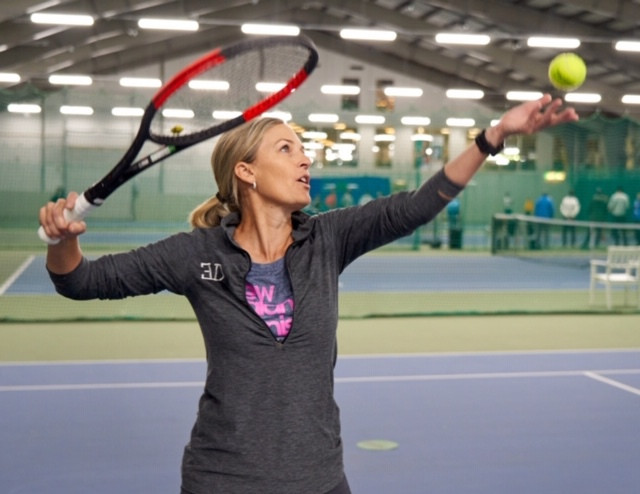
I think too many coaching lessons happen without any embedded pressure. It's almost like you look amazing (in practice) because I'm feeding you balls and you look really good, maybe the coach said, last ball (“make it a good one”), so you have to win the last point of the whole hour session. But that's not embedding pressure. You have to build pressure with micro-moments of competition to help people just, work on a skill, put it under pressure, work on a tactic, put it under pressure, etc. I just keep that holistic approach in the forefront of my mind and I don't just say now here is some pressure. Give them strategies on how to cope with the pressure, such as the anchoring technique that we covered earlier.
SportsEdTV: That's great, give a player the tools to deal with the pressure as opposed to same as throwing them in the deep. We have two questions. One from Caesar. What other sports do you recommend for young tennis players?
Emma: Well, first of all, get them playing as many sports as possible, keep them in more than one sport for as long as you can. That's number one, especially, a team sport to enhance their social and life skills. Martial arts is always a great choice for discipline. I did taekwondo when I was growing up, and it tremendously helpful for my tennis and as a coach. This came from my instructor, one of my biggest mentors, Damien Carmody-Stephens, who was the national Australian and Singapore kendo coach ( Japanese sword fighting) and so many of my philosophies come from him. Equally, many of my one-liners come from him, like teaching players how to "being in service to the sport" as we mentioned earlier. That's Damo in a nutshell! That's what he taught me as a young coach and how to embed this philosophy in my players. I think that the discipline, focus and respect that comes from any kind of martial art sport that is one thing that is sometimes from tennis. If you really respect the game and you come from a landscape of inviting your opponent to play their best, leave it all out on the court, just you play your heart out, that is the ultimate feeling that competition has to offer.
SportsEdTV: We have another question. How do players manage their ego and arrogance when they play a match under pressure?
Emma: Firstly, let’s define what the ego is and redefine arrogance. I would get a player to connect with what life skills they consider to be arrogant, what's considered the ego because often this is misinterpreted. There's a subtle difference there. Because often, don't forget, ego and arrogance are just masking what is really going on for a player. We have another expression as an NLPer saying that every behavior has a positive intent. So on the surface, it appears as arrogance but on a deeper level, it may just mean that this player is craving significance. The surface structure plays out as arrogant, but maybe it's just a mechanism needing to cope in that moment. They just need attention or that they're lacking something in their life, so it displays in what we call in an unresourceful way. Draw your ego. What does it look like when it’s ugly head reaches capacity? That’s another technique. We call that embracing the mind monster. Again, that's an NLP strategy, but one that's very useful. I've had some tremendous results with that, just that strategy alone. There's a couple it's obviously in-depth topic, but hopefully, it gives everybody a bit of an overview of some of the tools and strategies on NLP, helping their linguistic programming. It changed my life because I felt like I could only relate to half my players. Then when I went and studied so much of this work, I then found out, okay, I have to change who I am to bring out the best in this situation or in this moment or in this particular player, and that's one of the reasons why I'm such a huge advocate for this style of coaching.
SportsEdTV: That's awesome. I think this was a great concept. I know you have a book coming out if you want to tell everyone a little bit about it.
Emma: So one of the things that fascinate me is what makes a great coach? I have been interested in this topic ever since I became a coach and I actually took my first coaching lesson at the age of 14 years. Therefore the book that I am working on is called "What Makes a Great Coach?", I hope to have it completed sometime in 2021. I'm determined to have it ready and I'm excited about that. I have a lot of online educational resources that can be found at https://www.acecoach.com.au/ and of course, what I really am excited about sharing is the link which you've just posted, that's the link that takes you straight to the tennis NLP course. It's not the whole gamut of NLP, but it's an introduction for tennis coaches and players to gain a deeper insight into the concepts that underpin NLP.
SportsEdTV: That's awesome. I mean, I enjoy this topic. Thank you so much for your time.
Emma: You're welcome.
SportsEdTV: I think it's a great tool. I think a lot about success, it's subjective, right? You can define success, but a lot of the people have won a lot of matches, work on the mental game and it's awesome that you have the tools for all of this.
Emma: How we individualize that to bring out the best in each person, is the secret sauce, isn't it? I think even the theme for our chat today, I really enjoyed our discussion and one of the over-arching themes that came up for me was resilience. Falling in love with the battle of competition is always been one of my great philosophies. But the word resilience kept coming up today in my thoughts. I think we can all work on that because it's not an easy skill, but it certainly is right up there in the traits of the most successful players and coaches in the world today.
Thanks to you and SportsEdTV, I can't wait to film some activities together and really continue to impact people with a growth mindset around the world.

